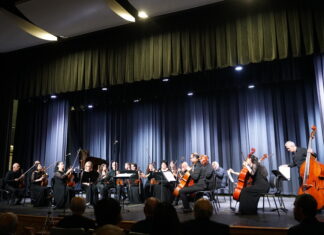The US engagement in the South Caucasus has become more active since the 2020 war, with increased anti-Russian sentiment in the region as well as the Russia-Ukraine war allowing for greater US involvement. Of course, Armenia operates within the existing South Caucasus dynamics rather than pursuing its own foreign policy while global players such as Russia and the United States are competing. Small states can participate in global processes rather than solely adapting to them, but this doesn’t apply to present-day Armenia. No matter how much anti-Russian sentiment is present, Armenia does not take steps which may come into direct conflict with Russia’s interests. Armenia is conducting a fearful or adaptive foreign policy, which is the result of failures in war and failures on the diplomatic front.
Thanks to the decline of Russian influence, the US is trying to use this historical momentum while Russia is fighting against Ukraine to try to take Armenia out of the zone of Russian influence. This of course explains US active engagement in the South Caucasus, particularly in terms of the activation of high level contacts with Armenia. The US-Armenian bilateral agenda hasn’t been enriched, but the US aims to bolster its presence in Armenia as fast as possible. As US Ambassador to Armenia Kristina Kvien has stated, US relations with Armenia “in just about every sector have expanded and deepened.”
But when we take a broader perspective, we also observe other regional advancements. Significant changes are taking place in neighboring Georgia. One might observe the greater interest and involvement on the US side with Armenia, in different spheres, including military, while relations with its traditional ally in South Caucasus – Georgia, have deteriorated.
Currently, we can see that there are ongoing geopolitical rearrangements in the South Caucasus region: specifically the traditional spheres of influence of the superpowers are somehow being modified. Georgia, being the US strategic ally in the region for years and seeking closer ties with the United States and EU countries, is now diverging from this path and repositioning itself towards Russia. More specifically, the “Foreign Agent” act (dubbed as the “Russian law”) introduced by the Georgian government has raised serious controversy and severed Georgia’s relations with the US and EU, leading to a hold on Georgia’s potential membership in the EU. These changes in Georgia’s foreign policy vector are neither welcomed by majority of its own people, nor by the Western countries. In addition, Georgia and Russia are very close to re-establish direct contacts, and diplomatic relations.
To put it simply, Russia’s influence is growing in a pro-Western Georgia while Western influence is growing in traditionally pro-Russian Armenia, and this is the essence of competition. There is no need to refer to Azerbaijan, because it is completely under Turkish influence, but it is also trying to deepen relations with Russia.
The US-Armenian deepened relations is not due to a robust bilateral agenda but rather due to the geopolitical vacuum in Armenia created after the significant decrease of Russia’s influence in Armenia since the 2020 War in Artsakh. The US is now pursuing its strategic objective of countering “Russia’s attempts to weaken and destabilize sovereign nations” as stipulated in the National Security Strategy of Biden administration. This includes attempts to fill the geopolitical void in Armenia by backing the “diplomatic efforts to resolve conflict in the South Caucasus.” In doing so the USA is countering Russia in the country by getting deeply engaged with the Armenian government, which is ready to normalize relations with Turkey and Azerbaijan by making unilateral concessions and meeting all the preconditions put by Azerbaijan and Turkey. In turn, normalized relations with Turkey and Azerbaijan would mean decreased Russian influence in the region.








